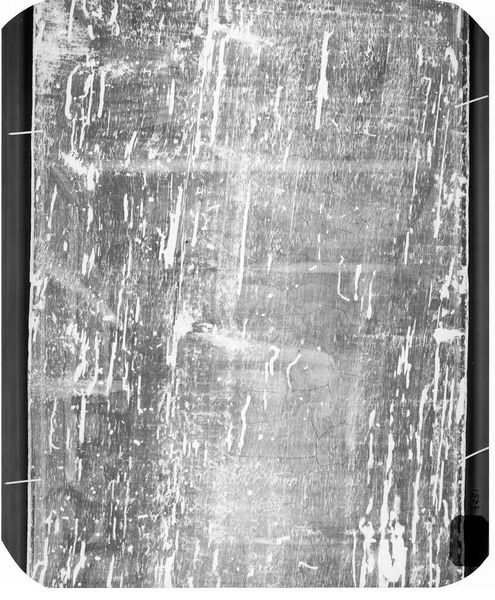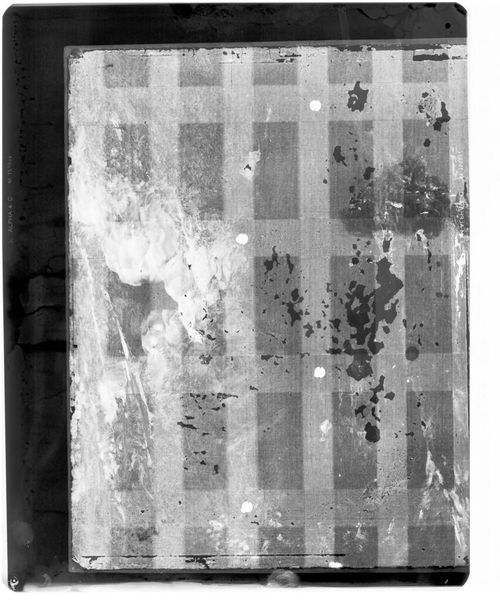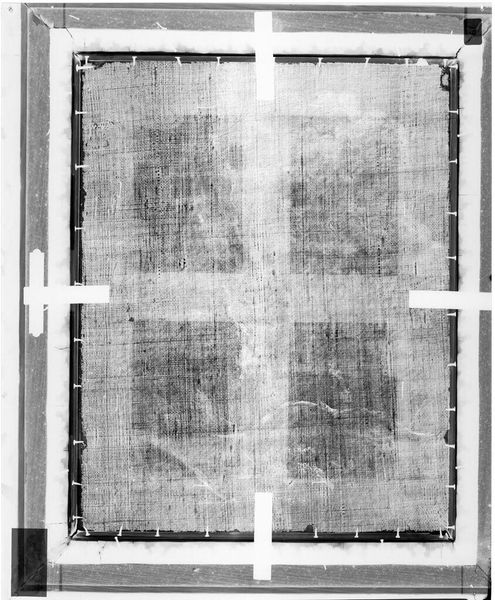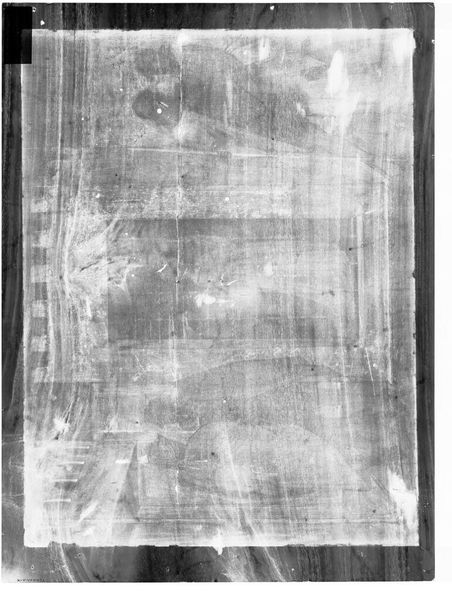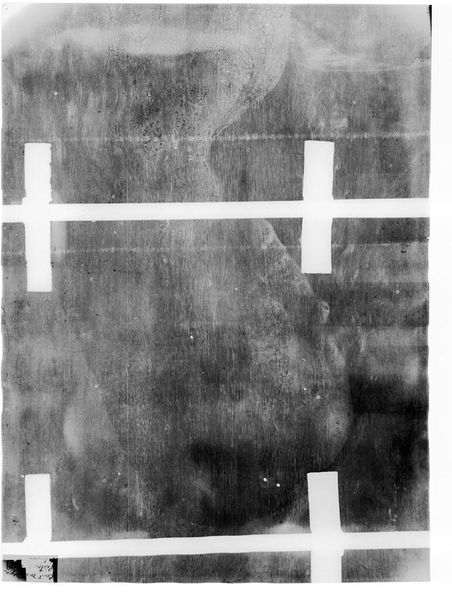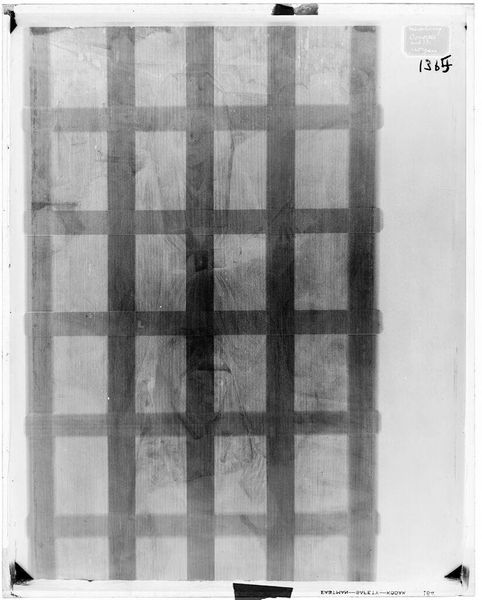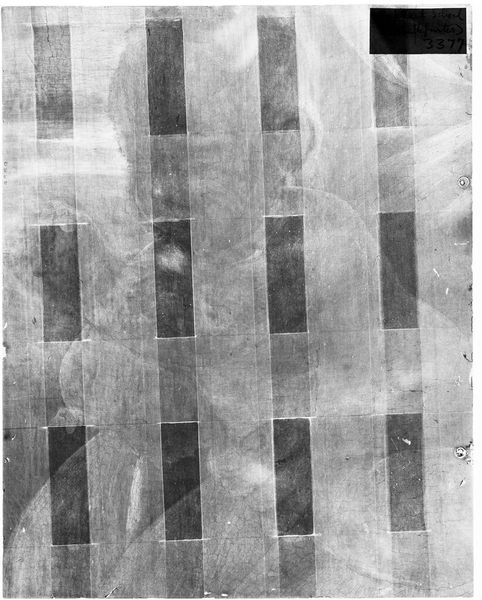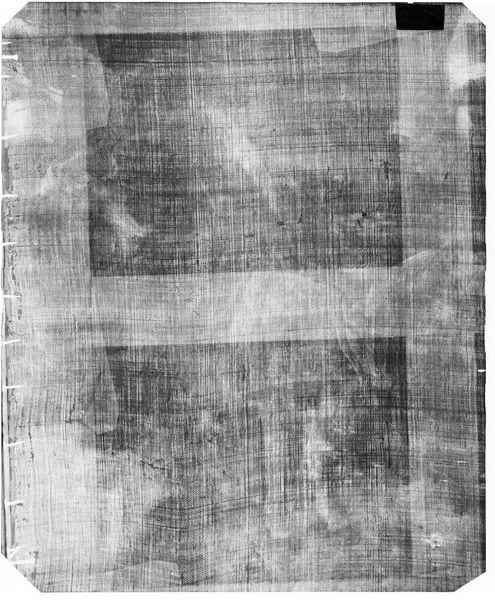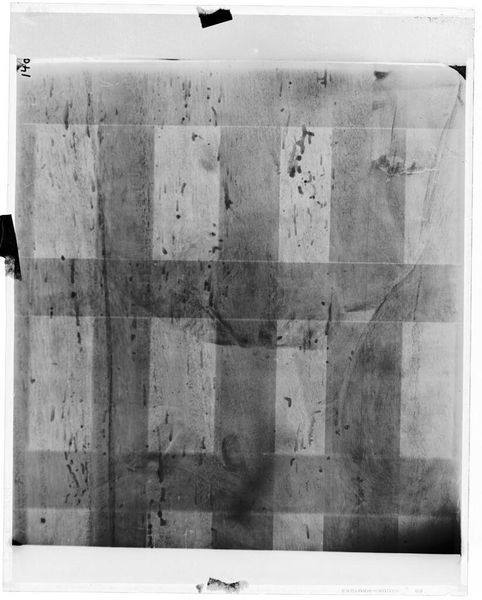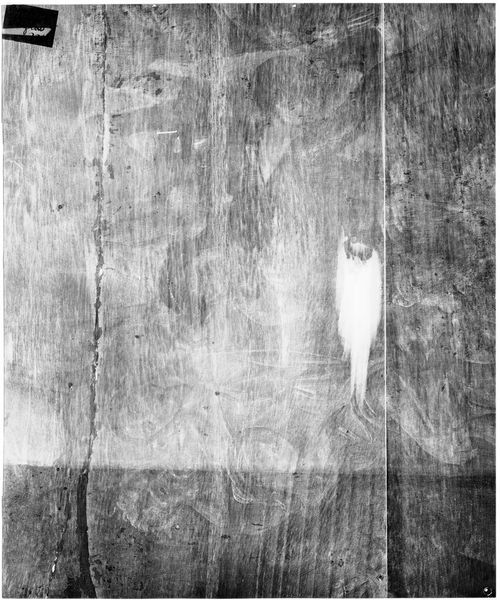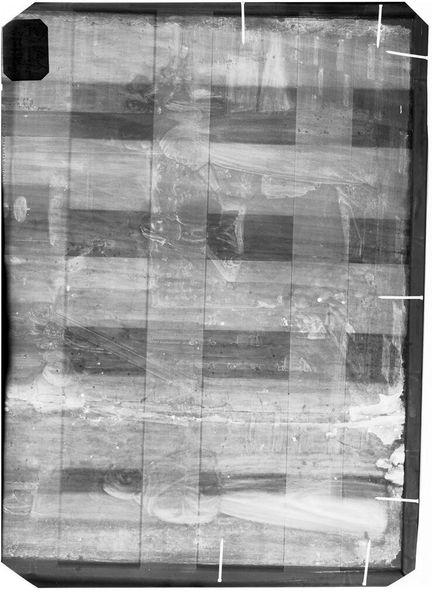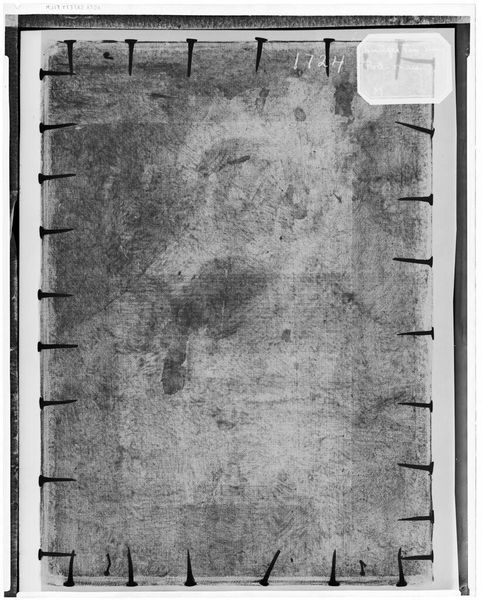
fibre-art, weaving, textile
#
fibre-art
#
sculpture
#
weaving
#
textile
#
geometric
#
indigenous-americas
Dimensions: 38.1 × 43.2 cm (15 × 17 in.)
Copyright: Public Domain
Curator: This intriguing textile fragment, attributed to the Wari culture and dated approximately 800 to 1100, presents us with an opportunity to reflect on ancient Andean artistry. It's currently housed here at the Art Institute of Chicago. Editor: There's a haunting quality to this piece. The stark geometric patterns against the dark field create a compelling sense of both order and mystery. The contrast really pulls you in. Curator: Absolutely. The means of production is just extraordinary. We're looking at fiber art, weaving, specifically, likely involving complex loom work and potentially dye processes that speak volumes about resourcefulness and sophisticated textile techniques for their time. Editor: I see layers of symbolism woven right in. The grid-like structure evokes urban planning perhaps, reflecting the Wari's expansive empire and administrative prowess. But those geometric figures—the squares and nested shapes— hint at deeper cosmic beliefs. They’re resonant, culturally potent. Curator: Precisely, how were the weavers organised to create this highly patterned work. Was it a singular master, or a co-operative of craftspeople within a specific labor model or societal structure? Its fragmentation also speaks to how objects enter our institutions and gain value and new symbolic currency. Editor: Yes, and that fragmentation...it's a powerful visual metaphor. Perhaps these shapes are maps or contain secret knowledge or function almost like abstract portraits representing high-ranking members of Wari society. It whispers secrets of the past through shape and line. The black ground, moreover, might signify a liminal state. Curator: We can speculate, however analysis must center on the materiality. Consider the wear and tear, too, and how that adds another layer, grounding it within its own tangible, used history. Who handled it? How was it stored? Where? The provenance adds significance, I agree. Editor: What do you think of that contrasting panel of unbroken colour? Curator: A powerful element! Possibly denoting hierarchy or material. Editor: Considering its symbolic potency and intricate manufacture I’m left marveling at how much a textile fragment can communicate over so many centuries. It resonates with cultural meaning that vibrates even today. Curator: For me it also reflects humanity's connection to process and how materials carry memories. I wonder at the journey of creation for this stunning textile, and all we learn, even as so much is unknown.
Comments
No comments
Be the first to comment and join the conversation on the ultimate creative platform.

